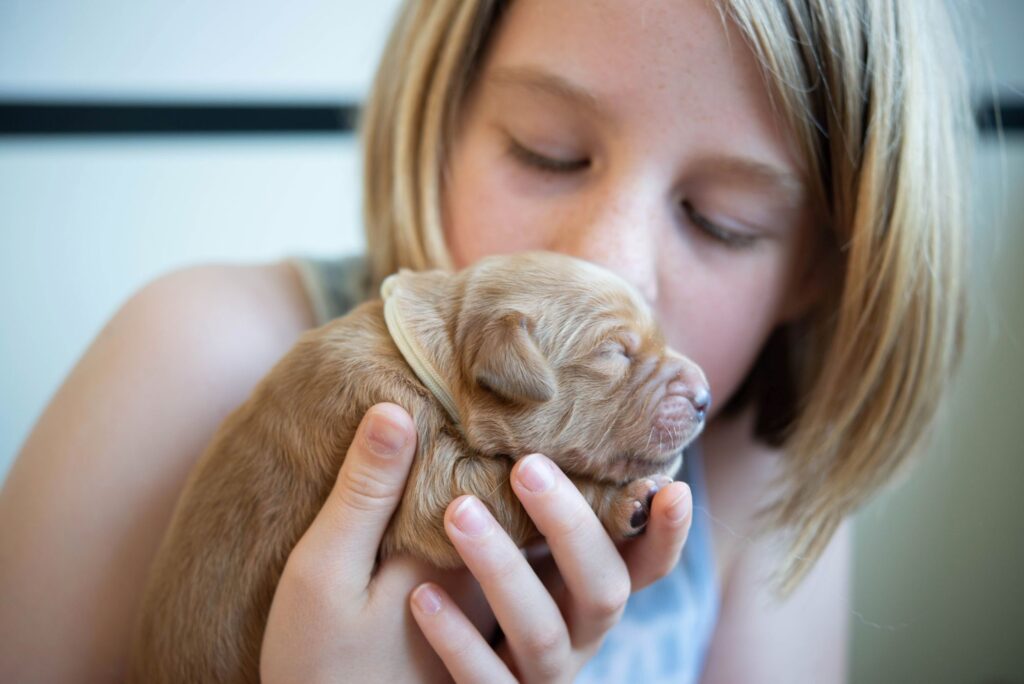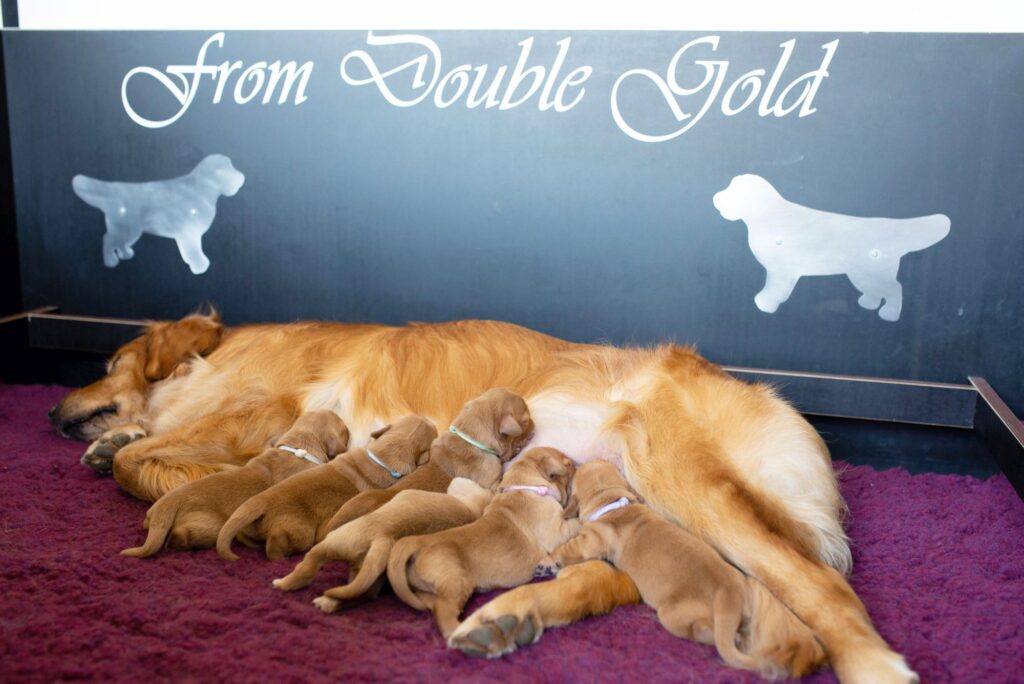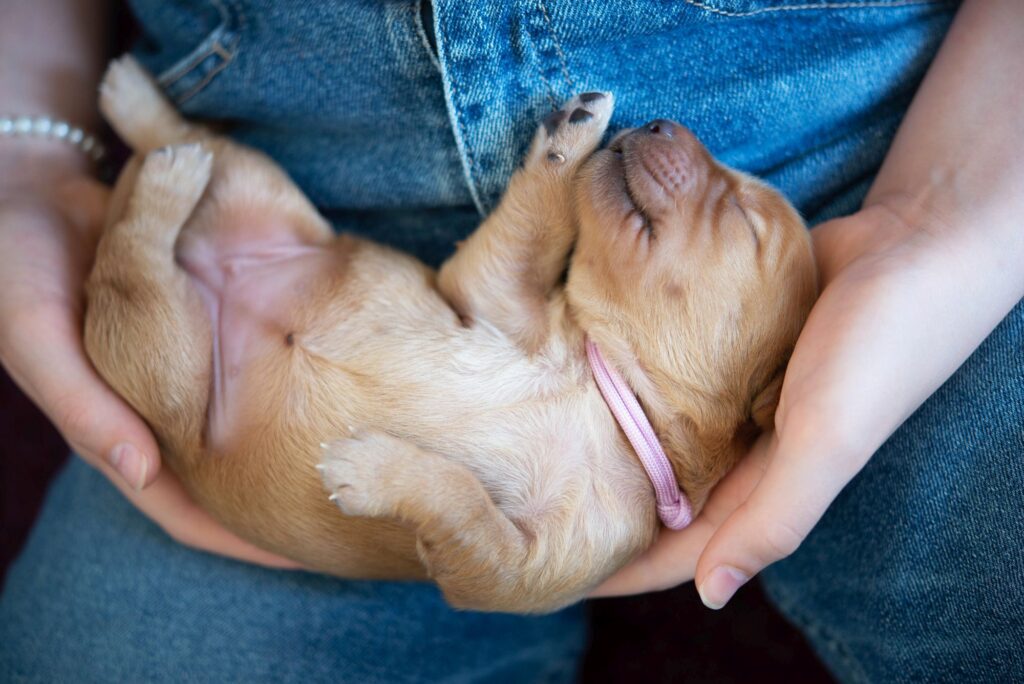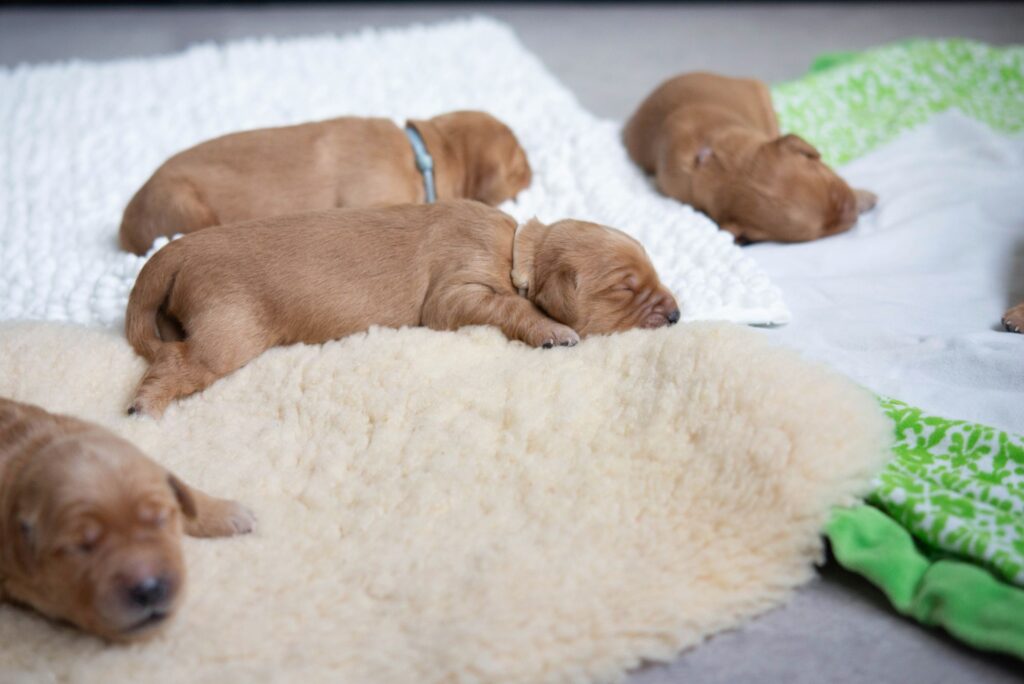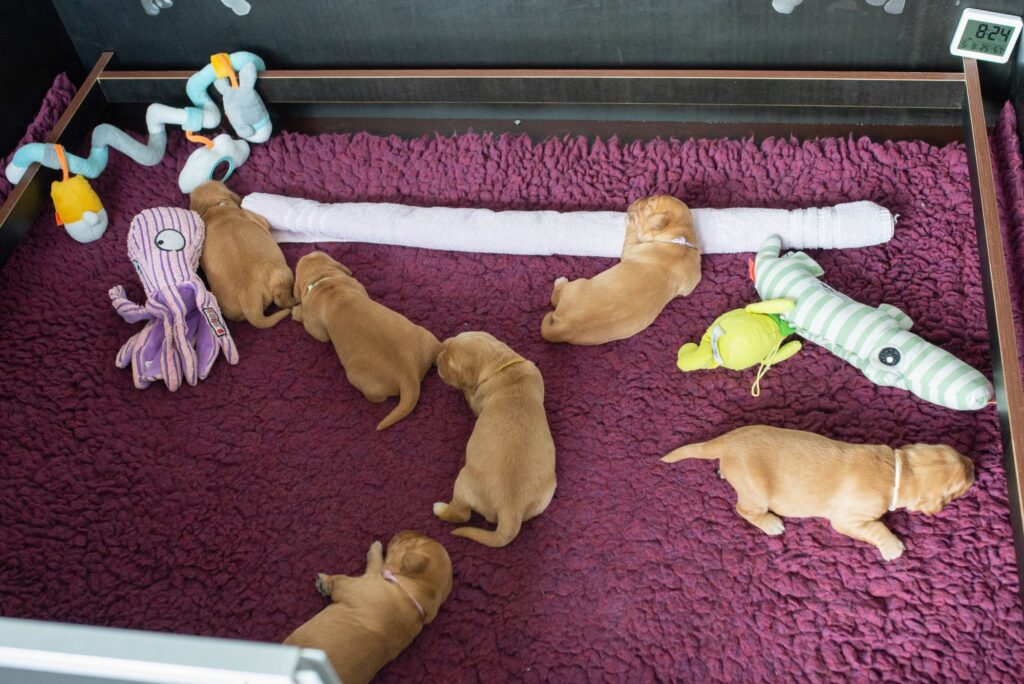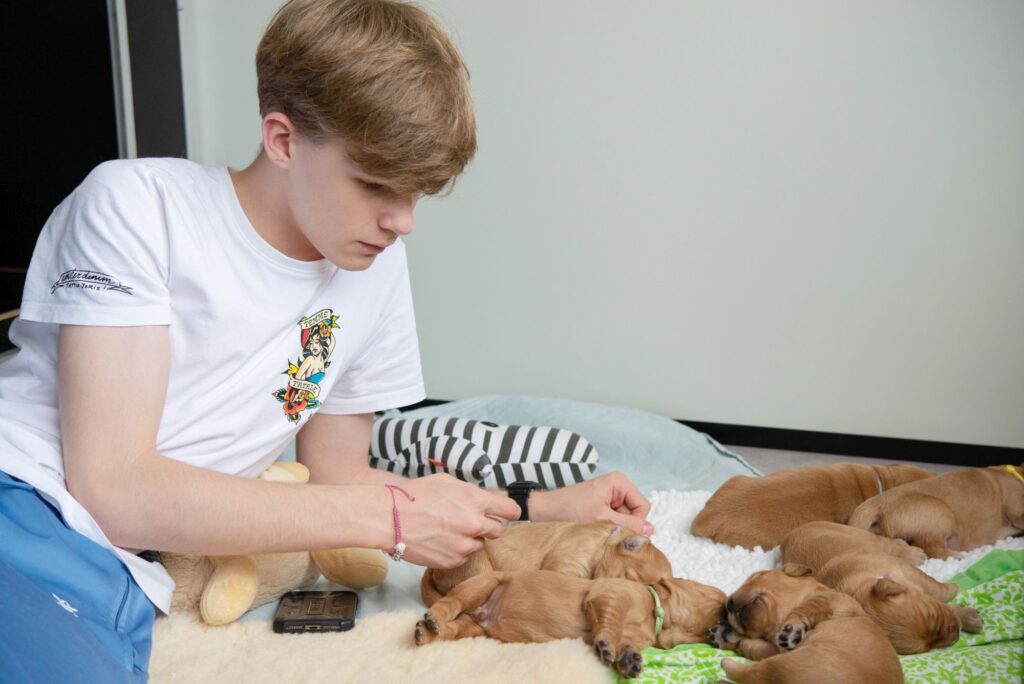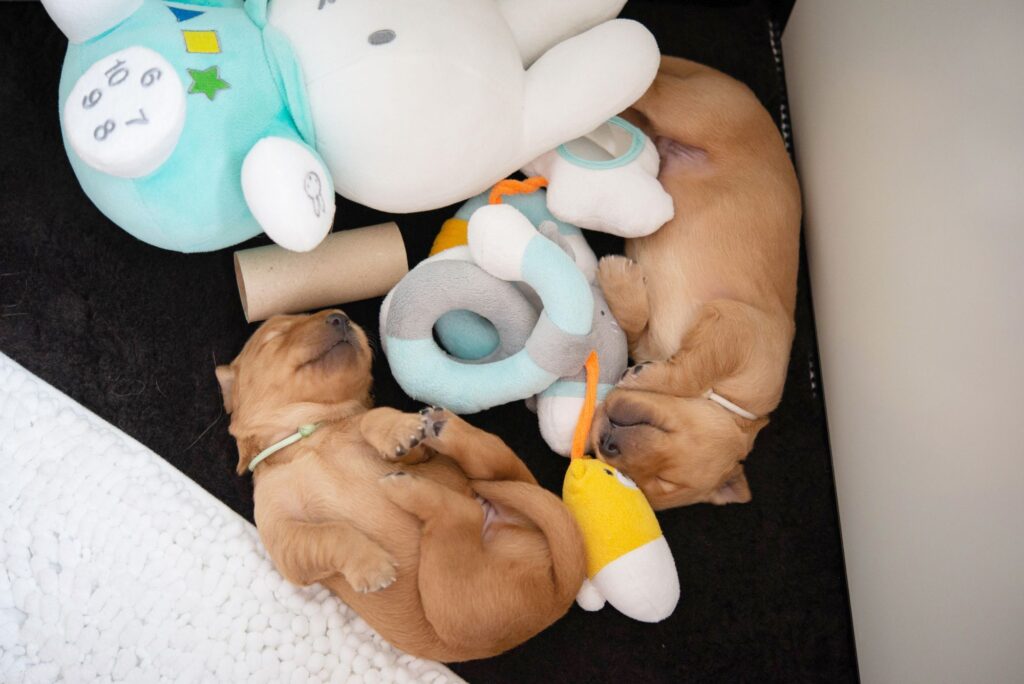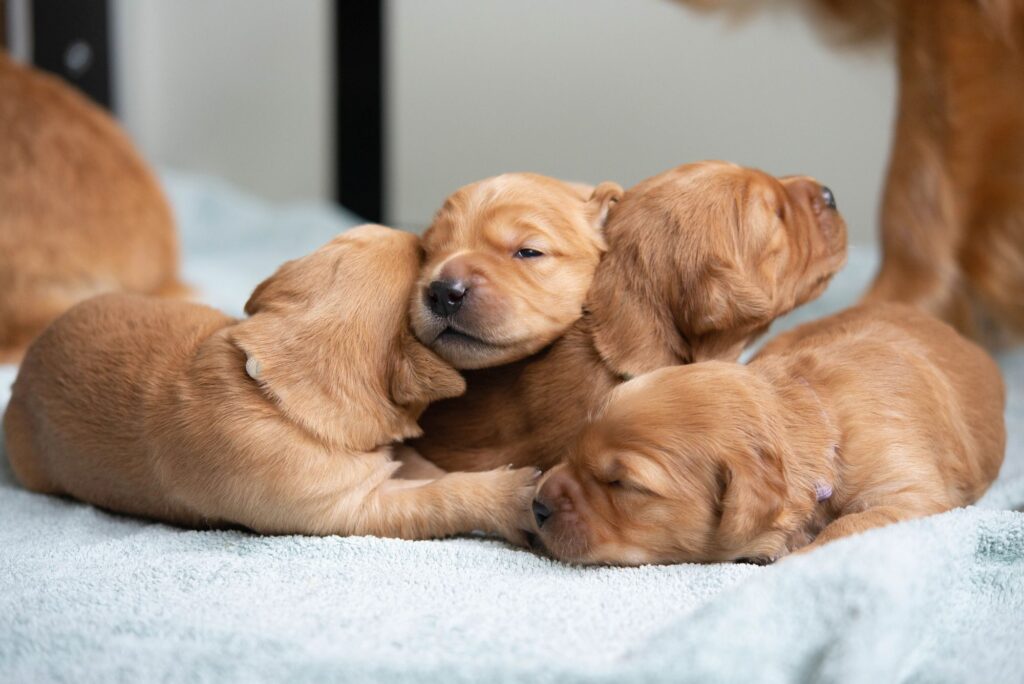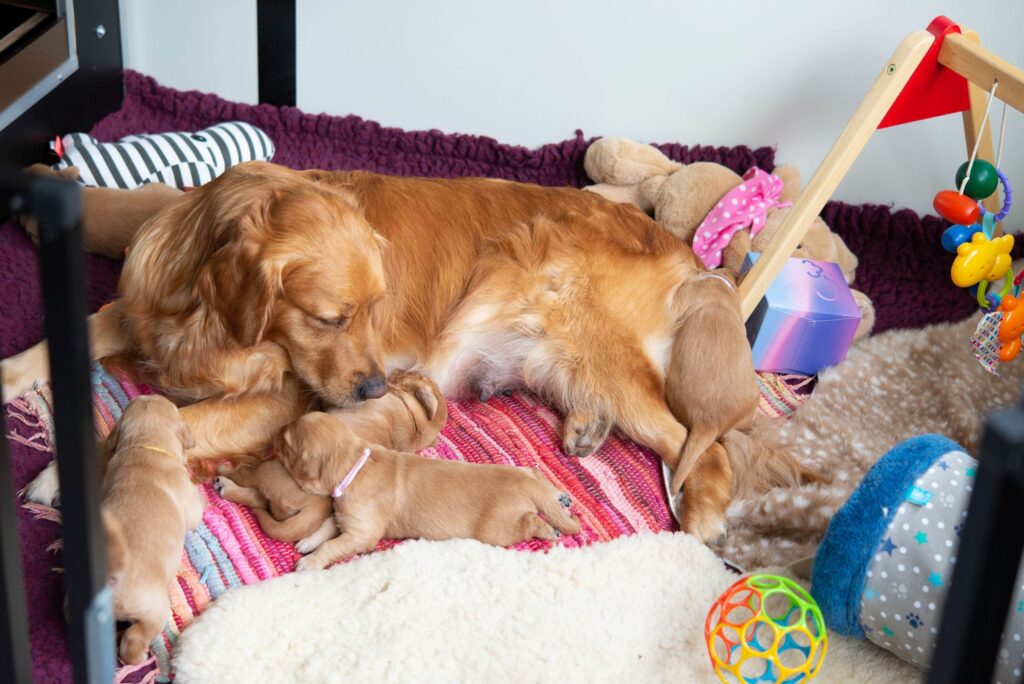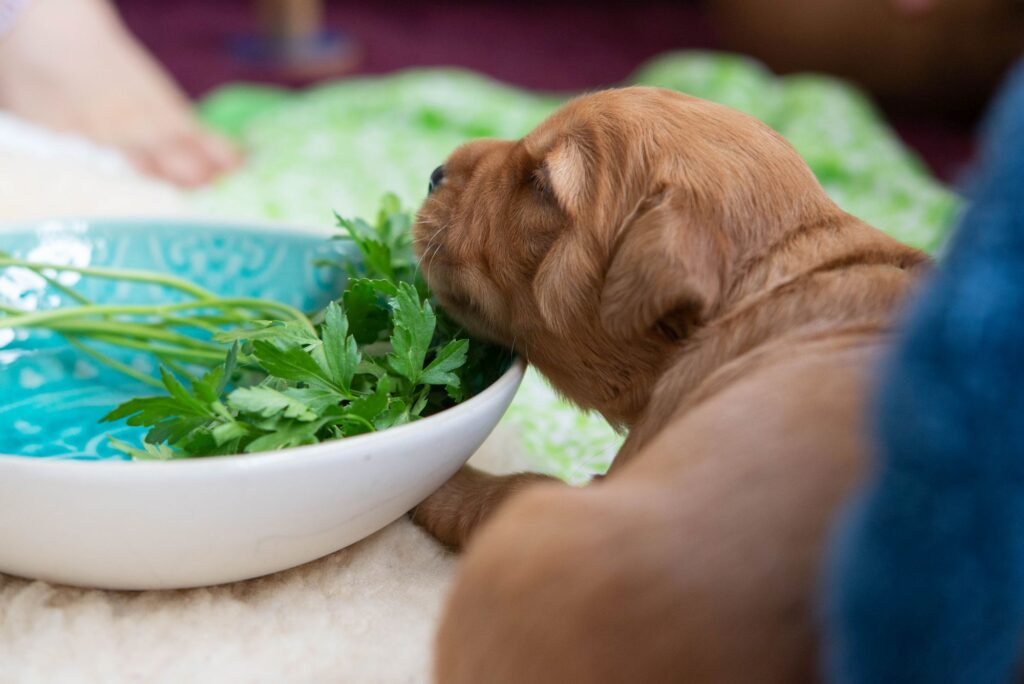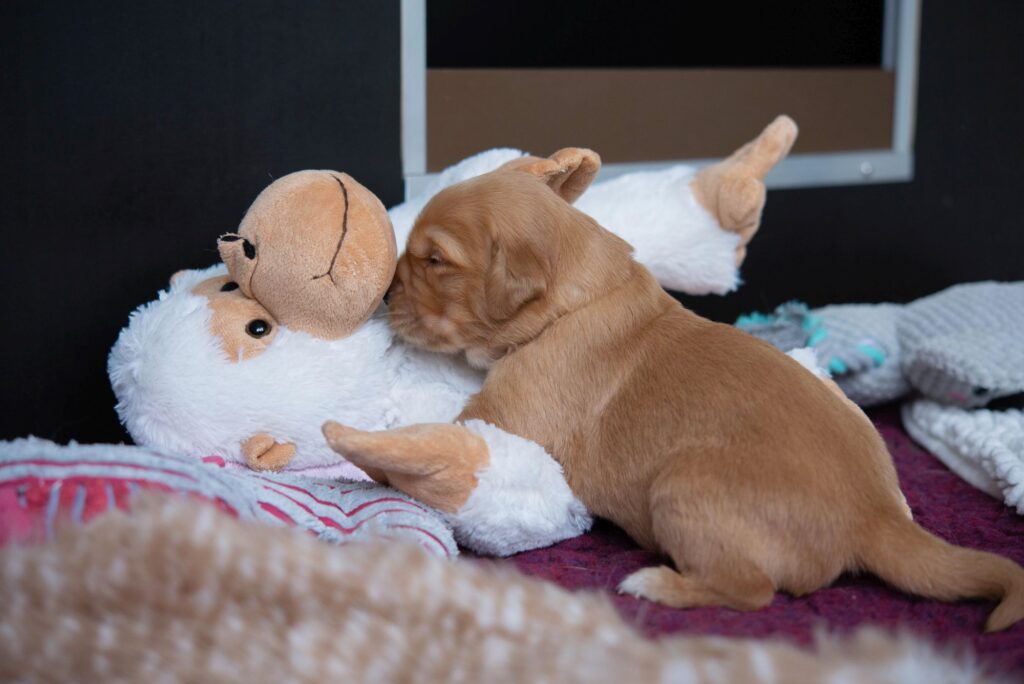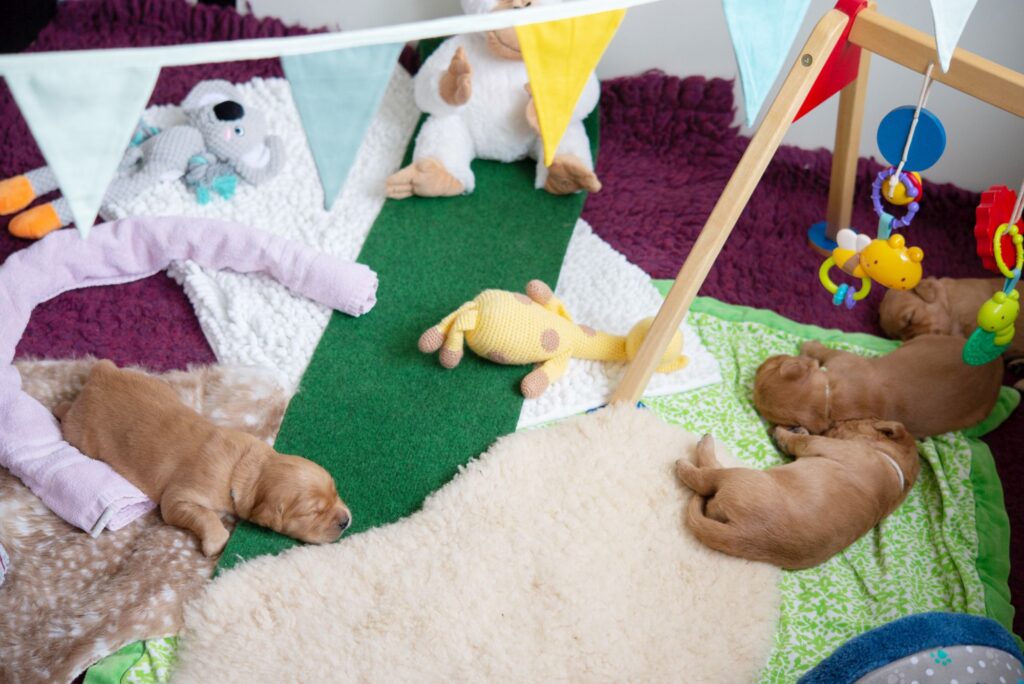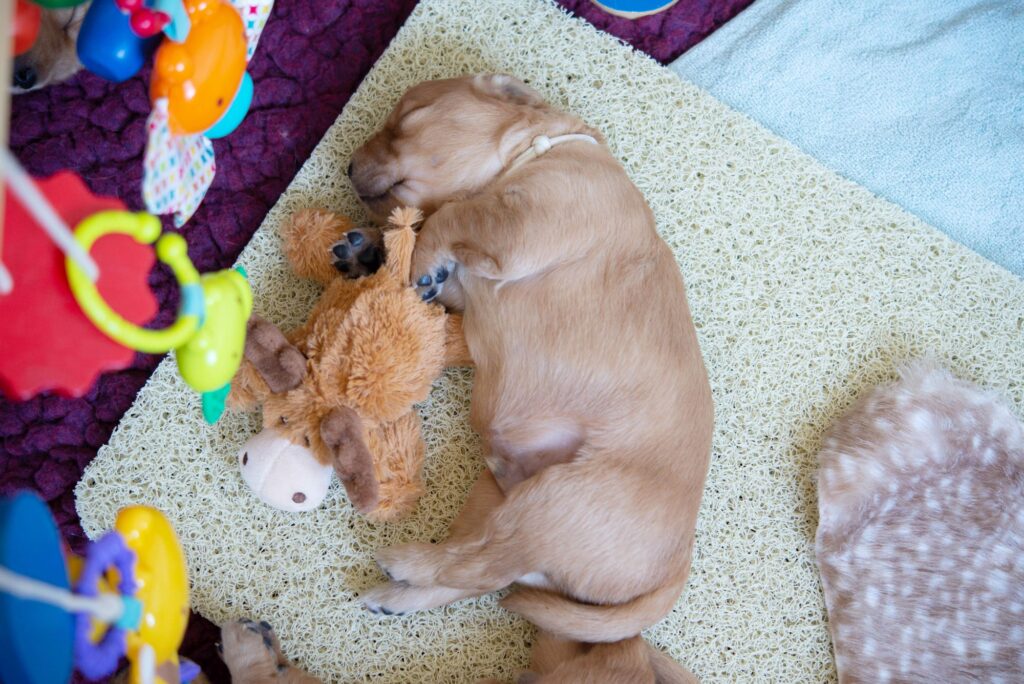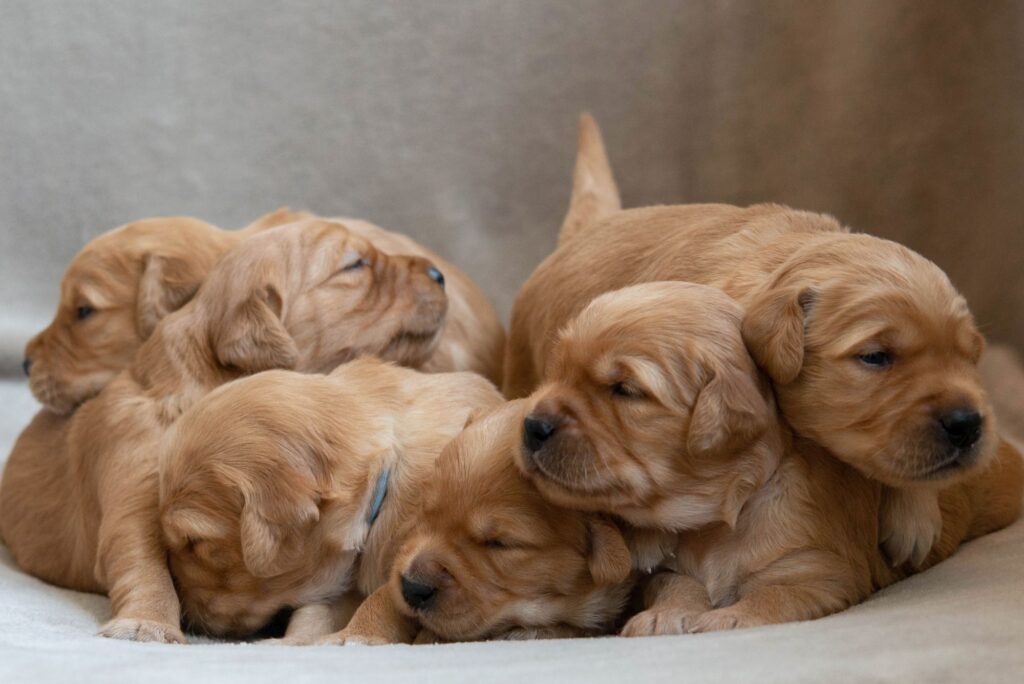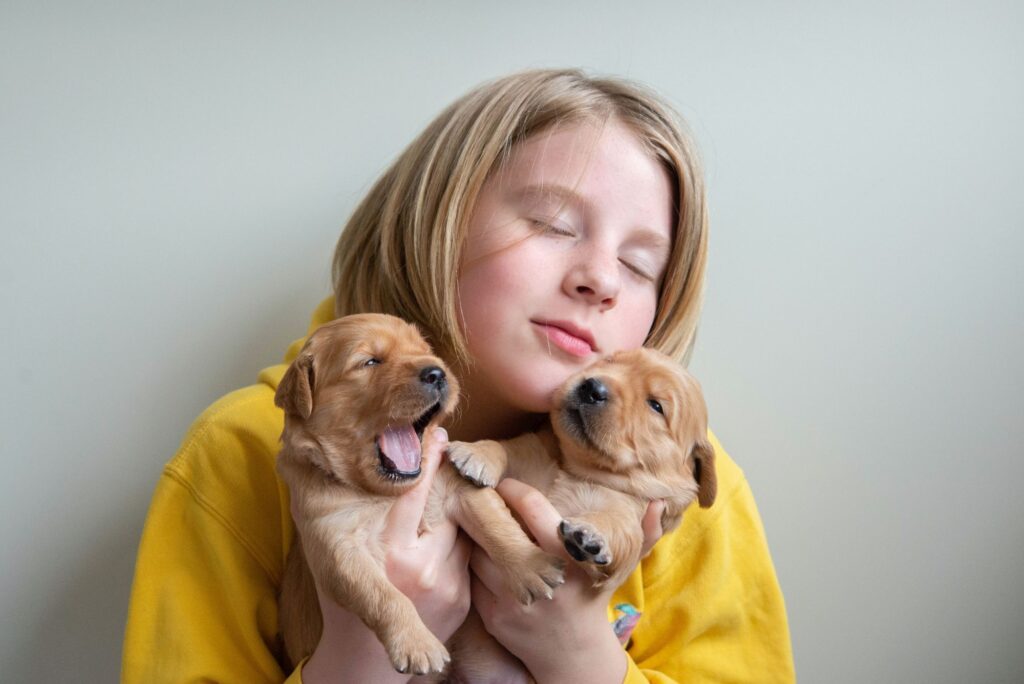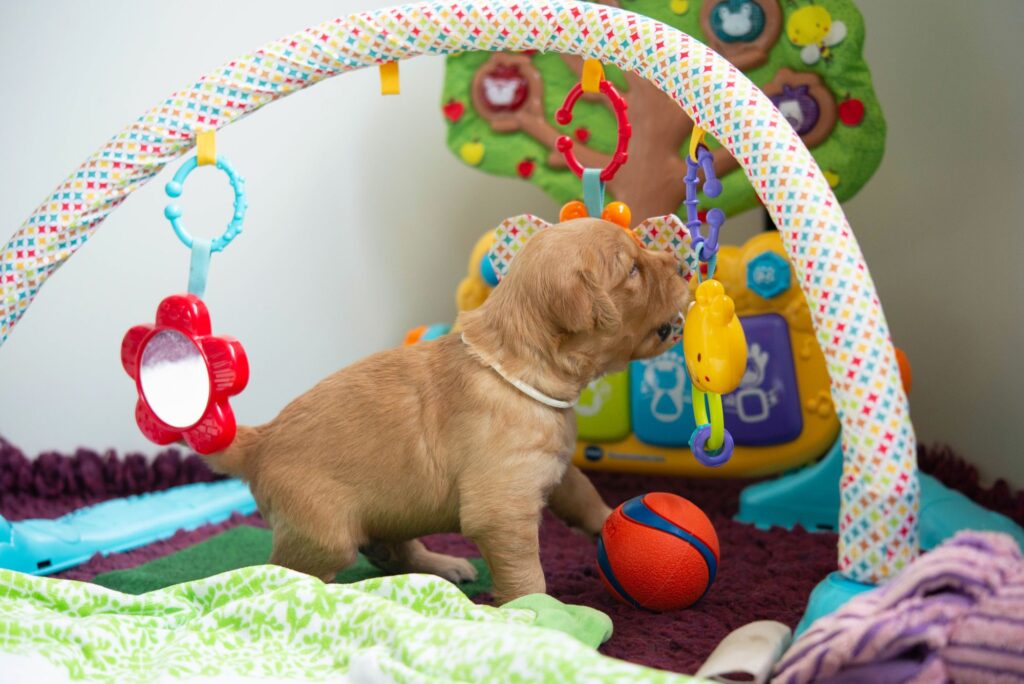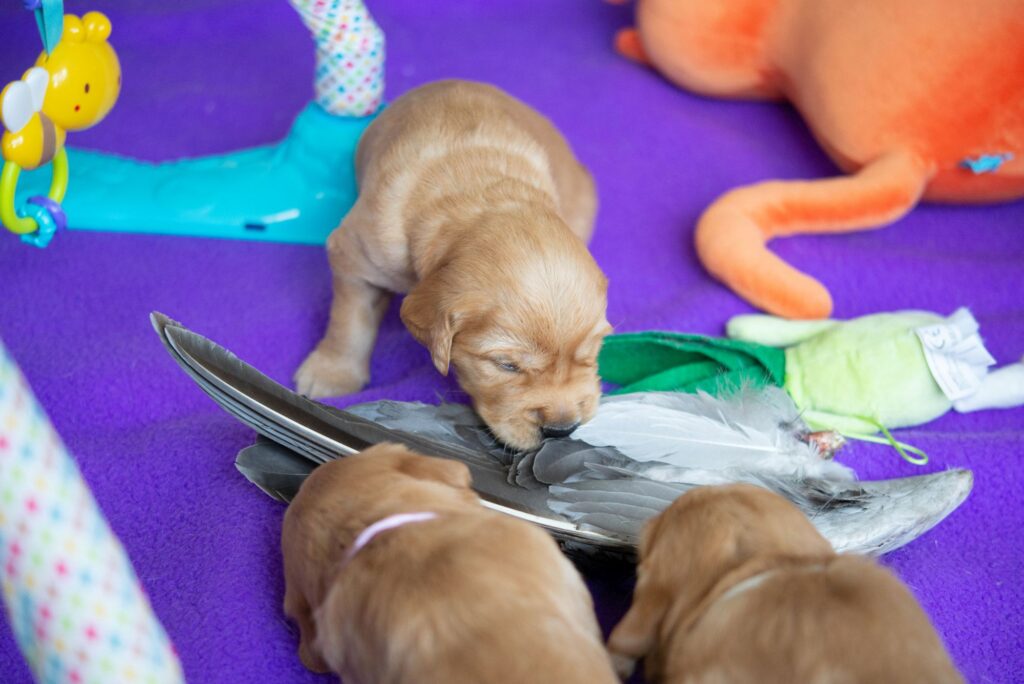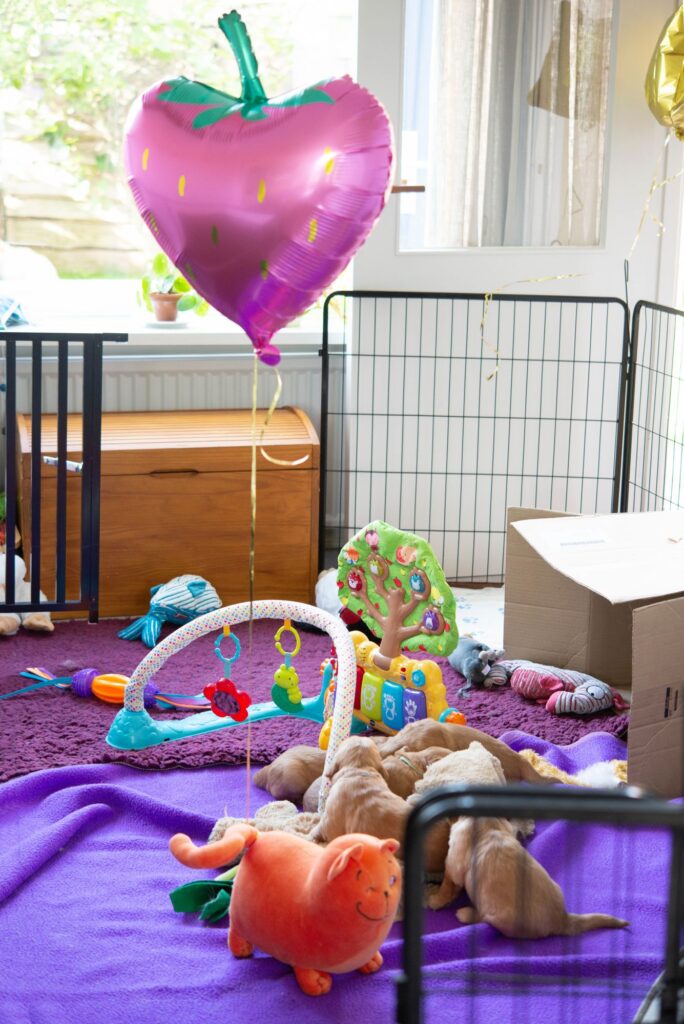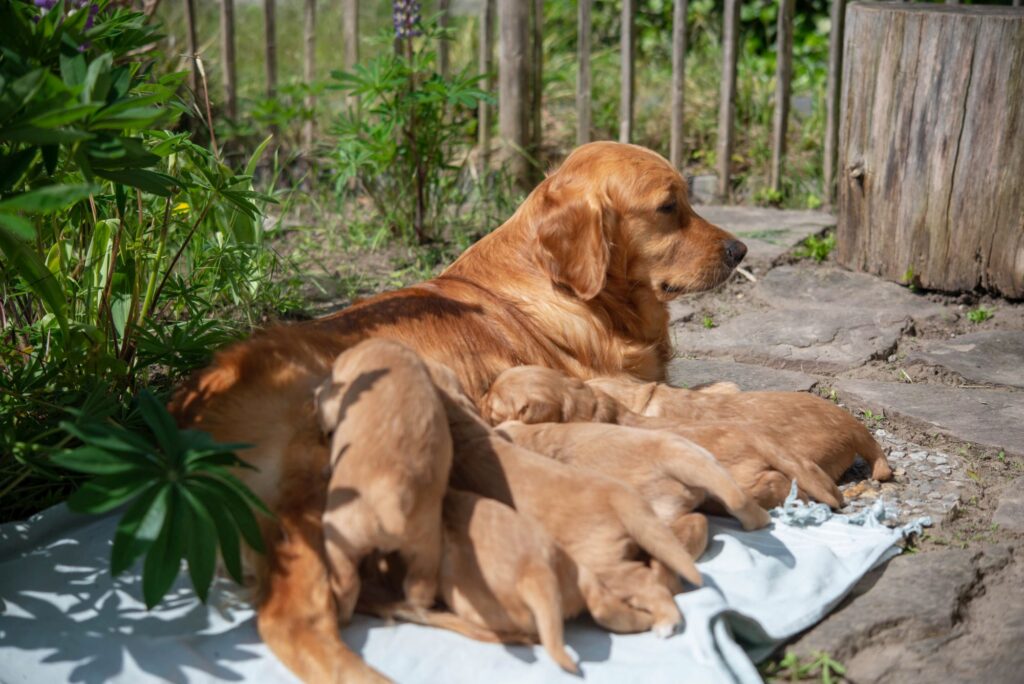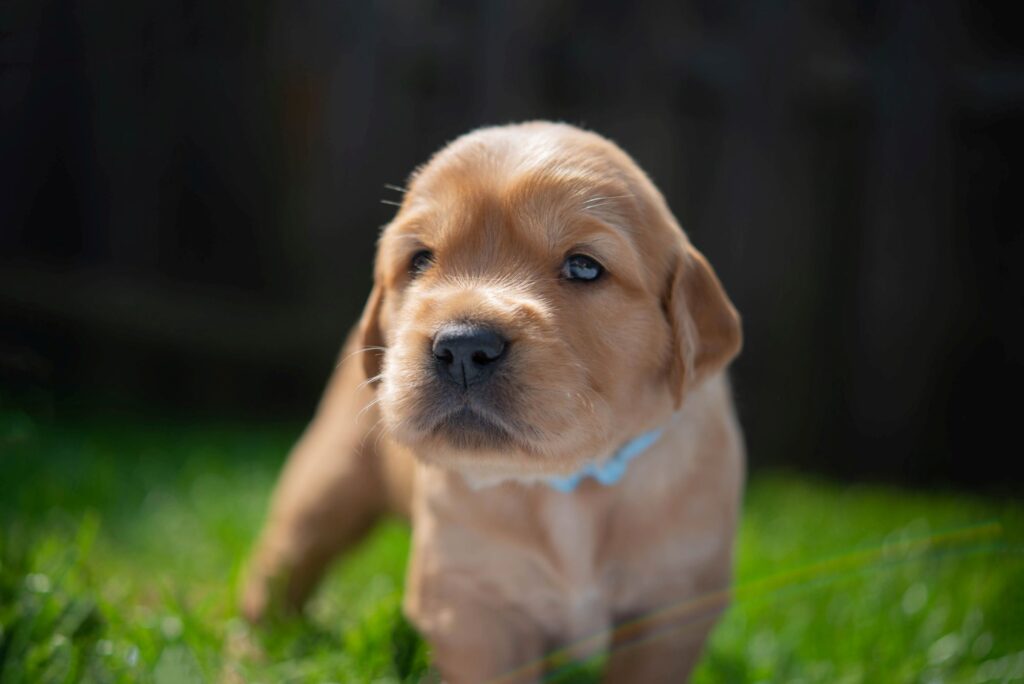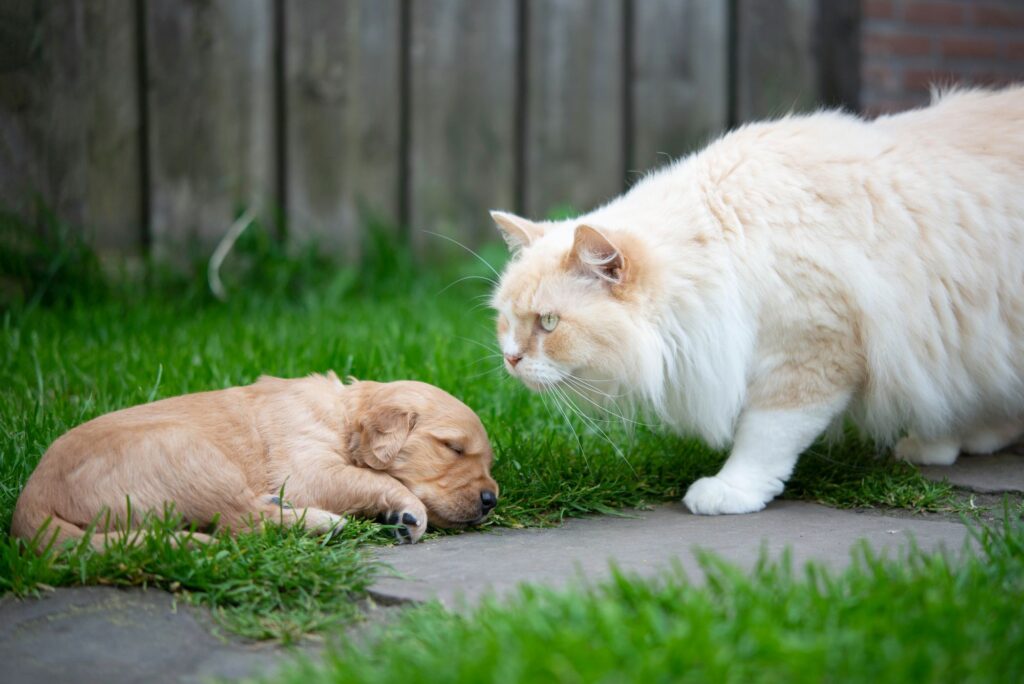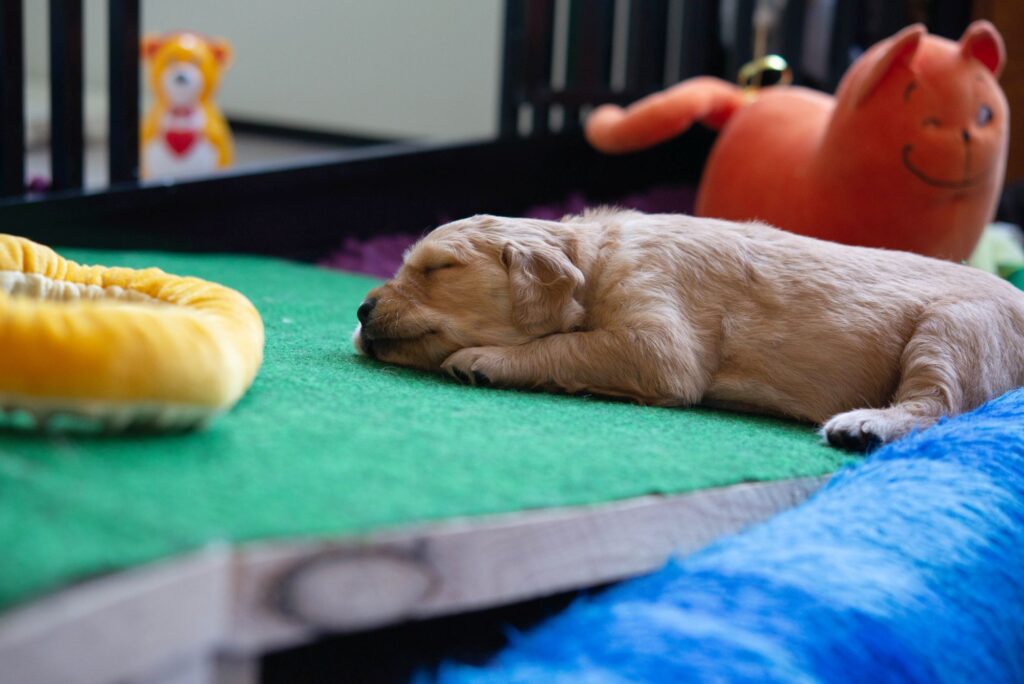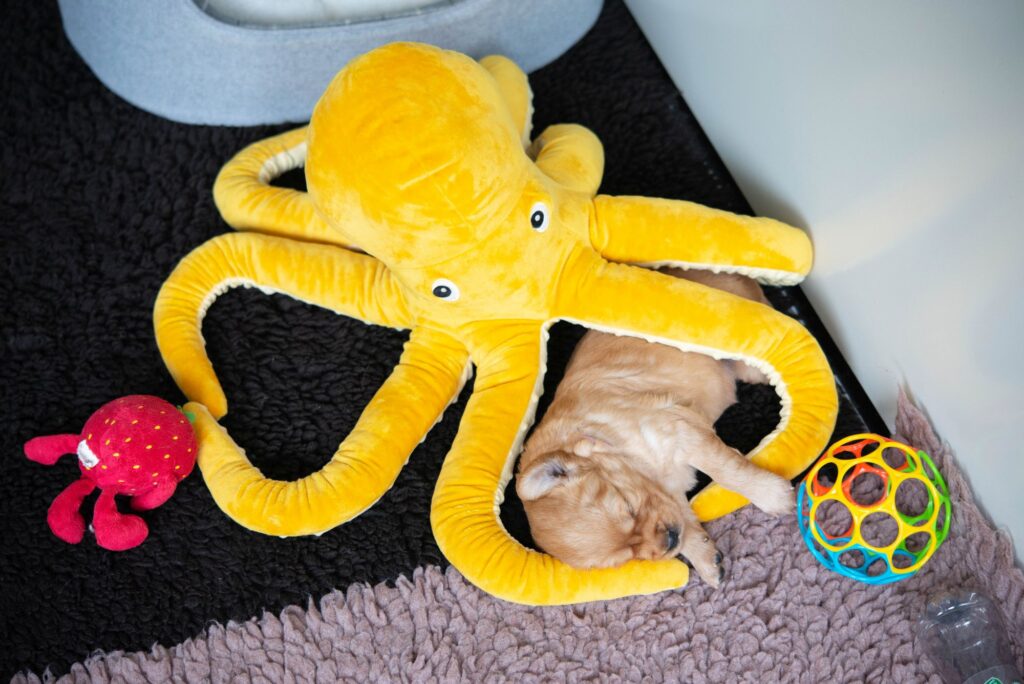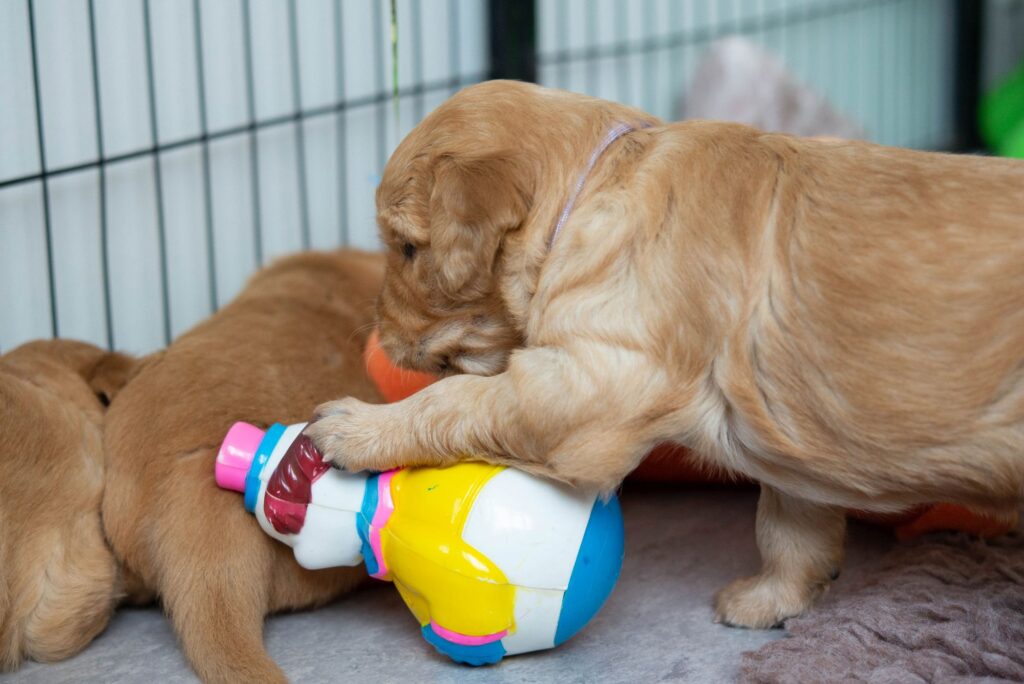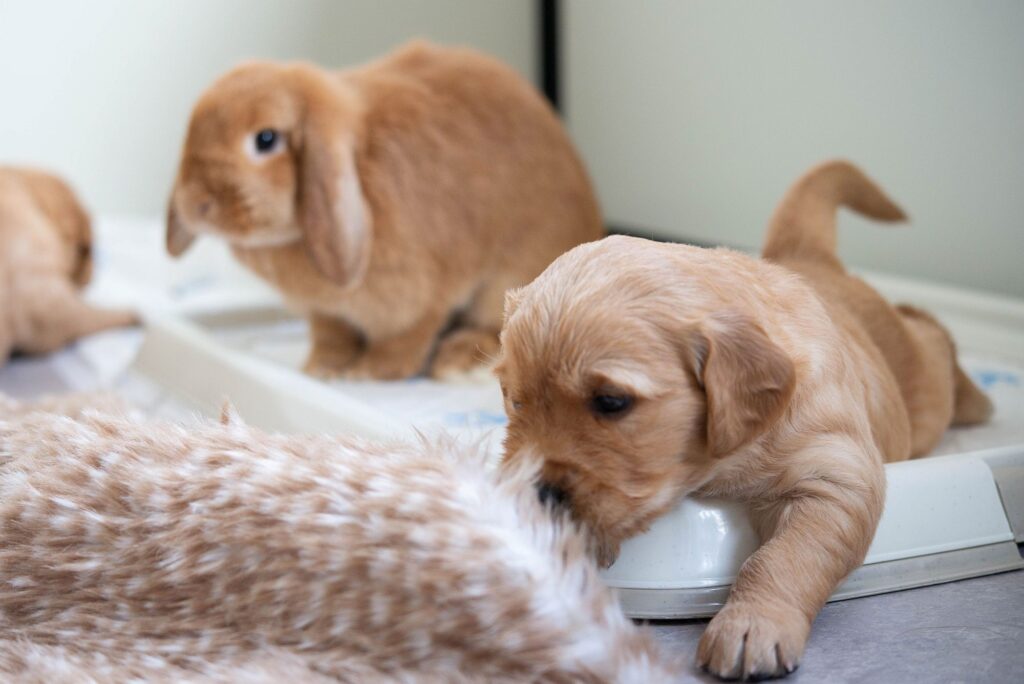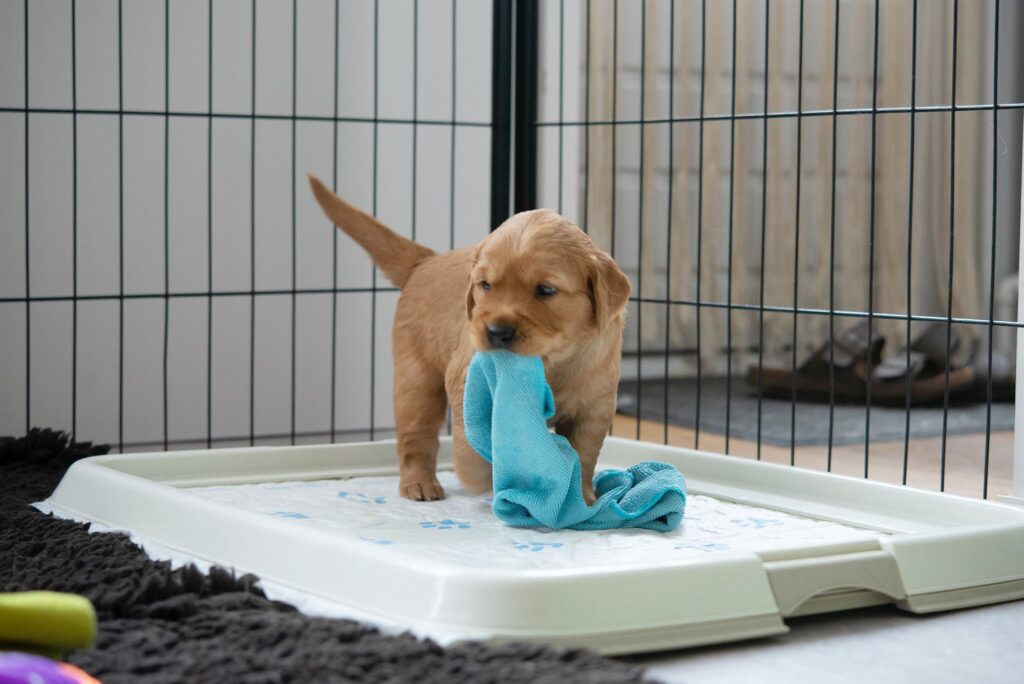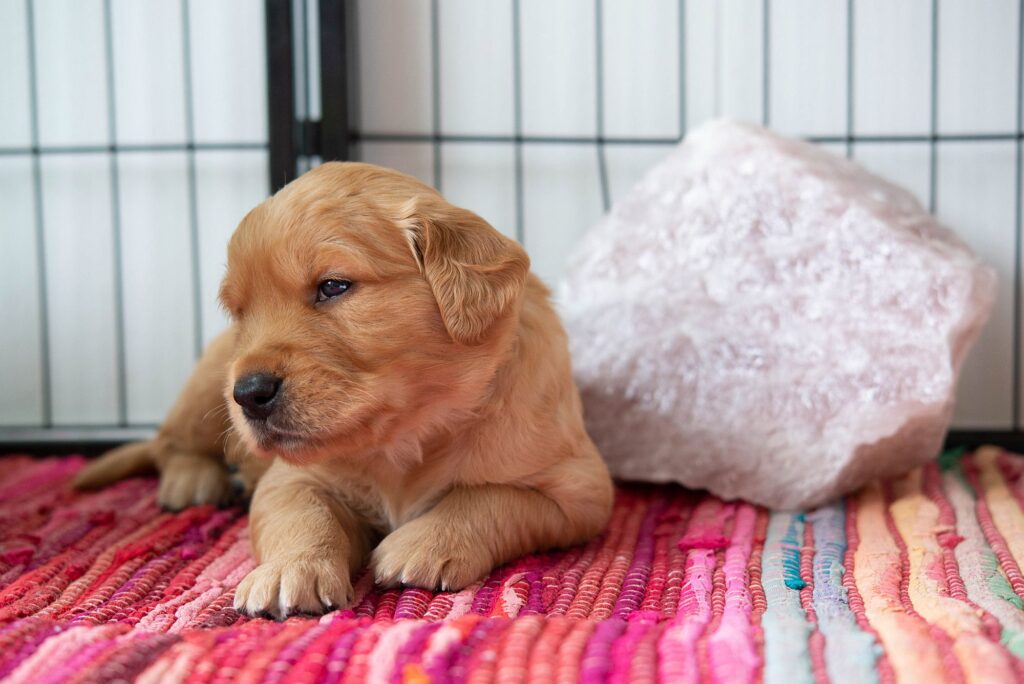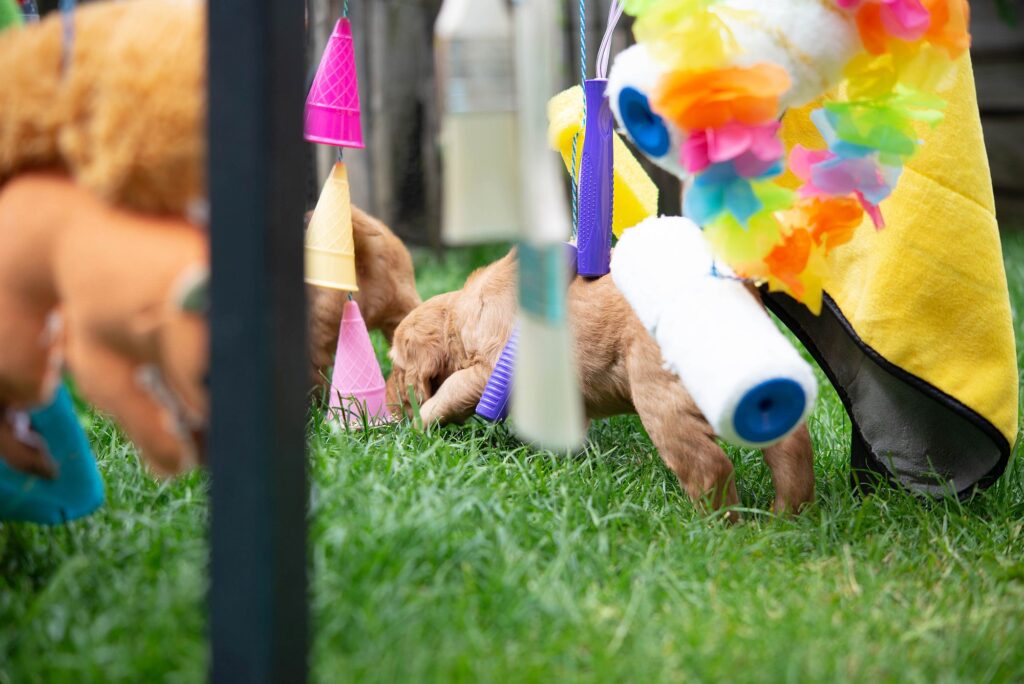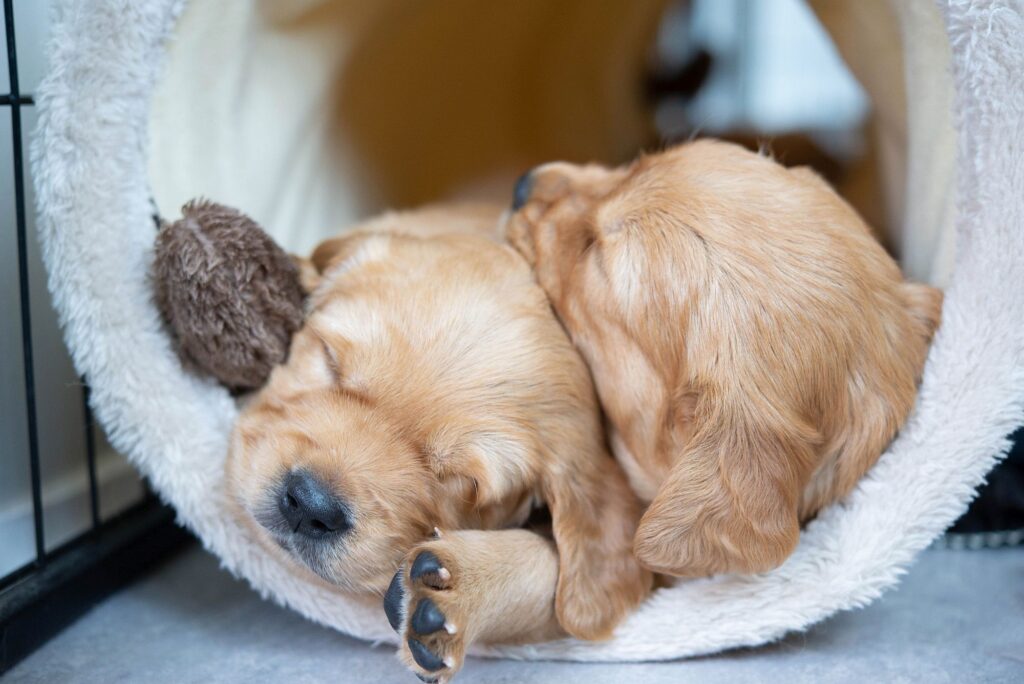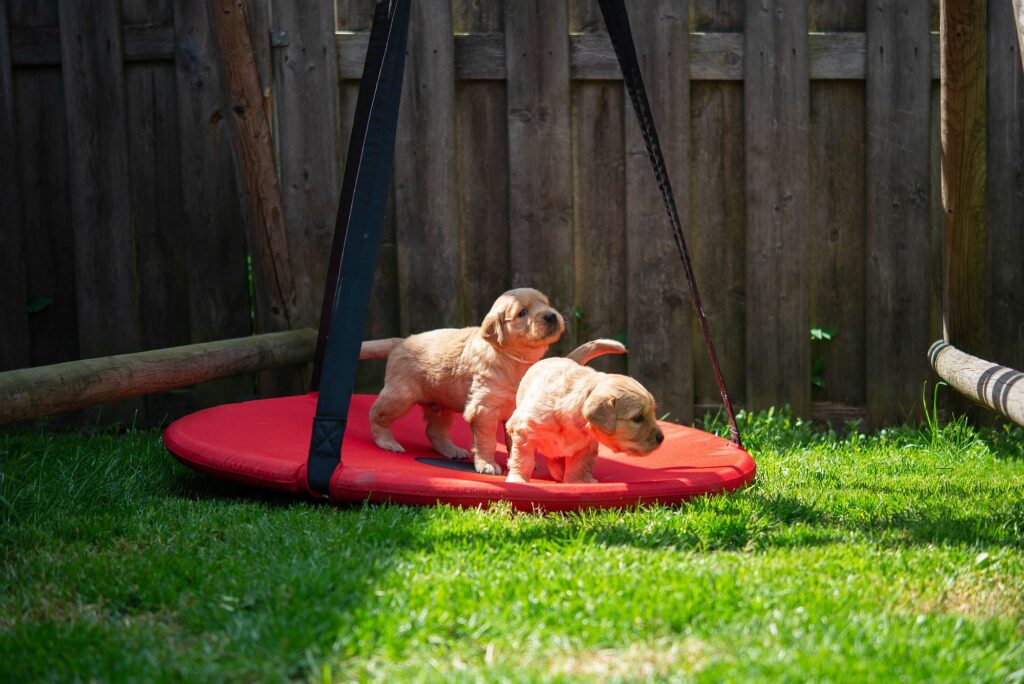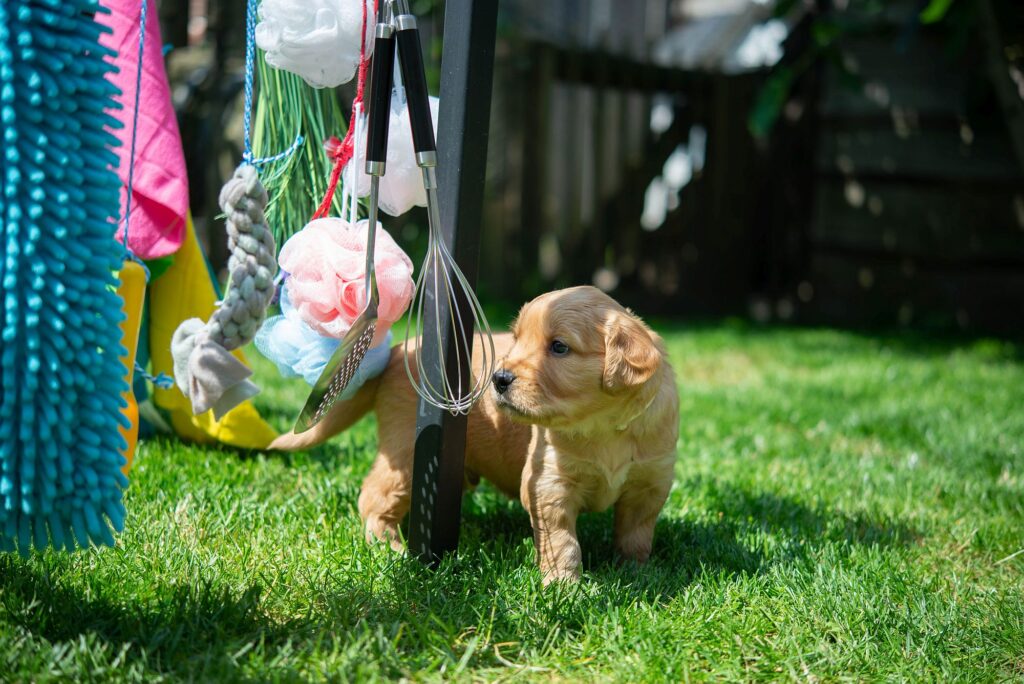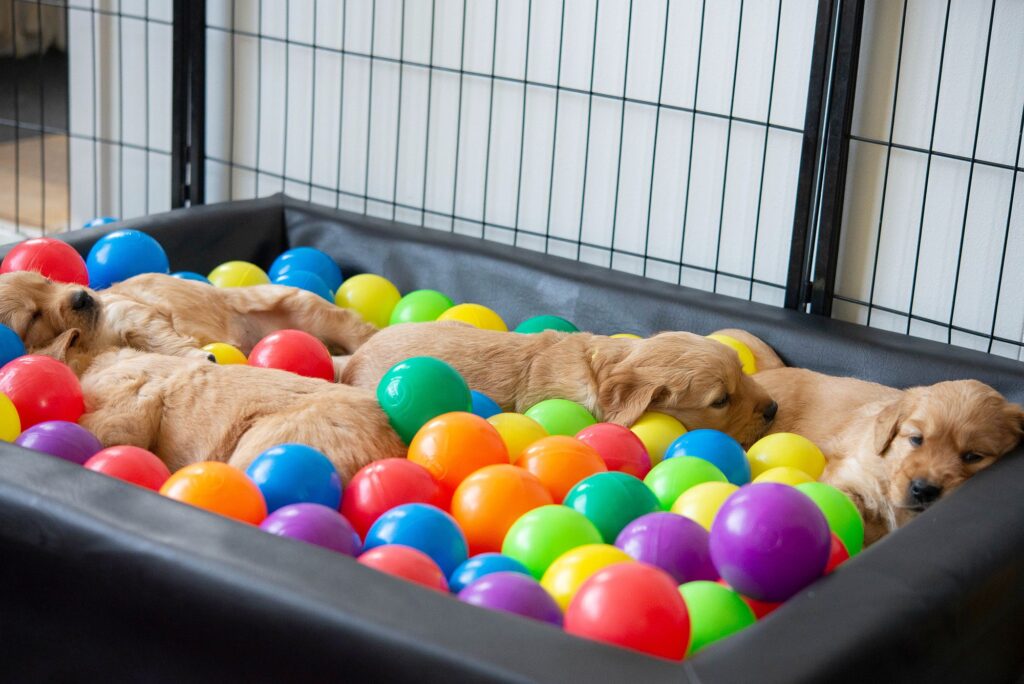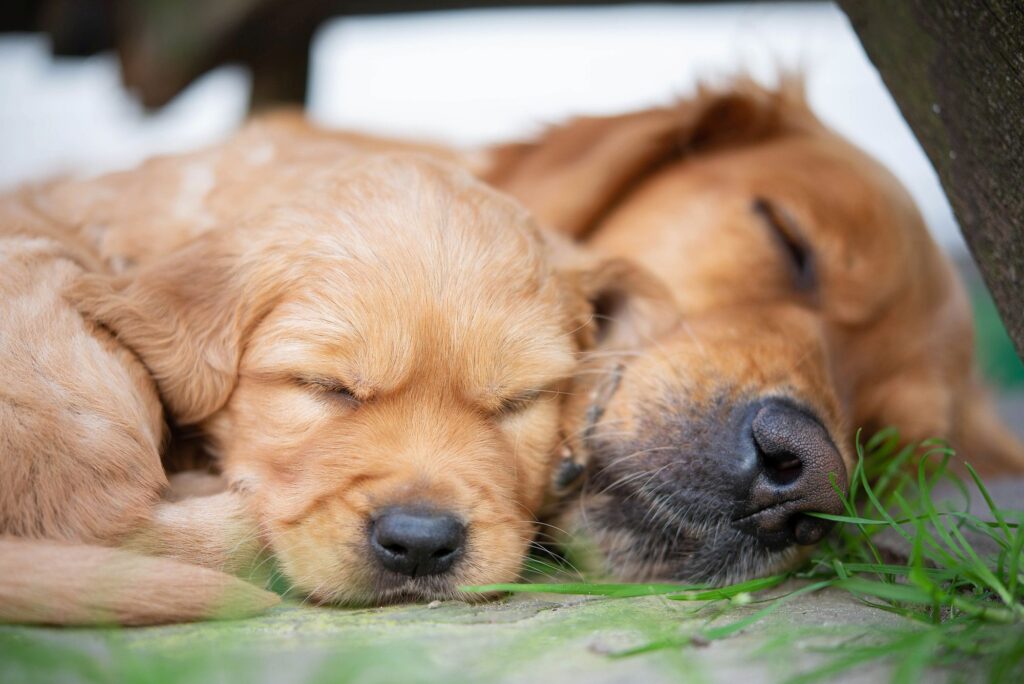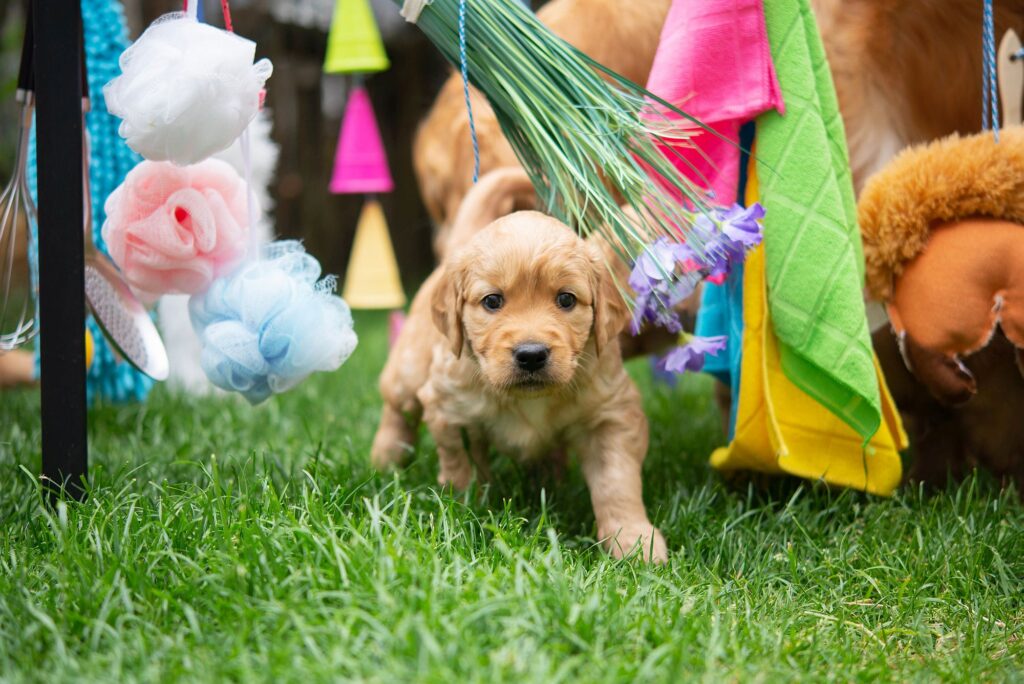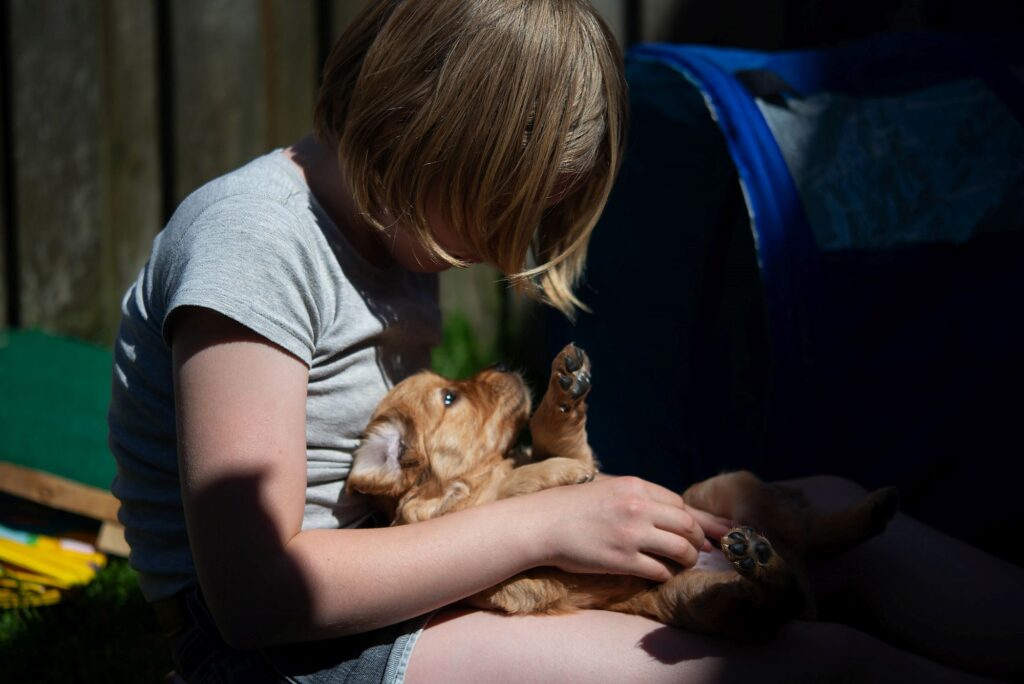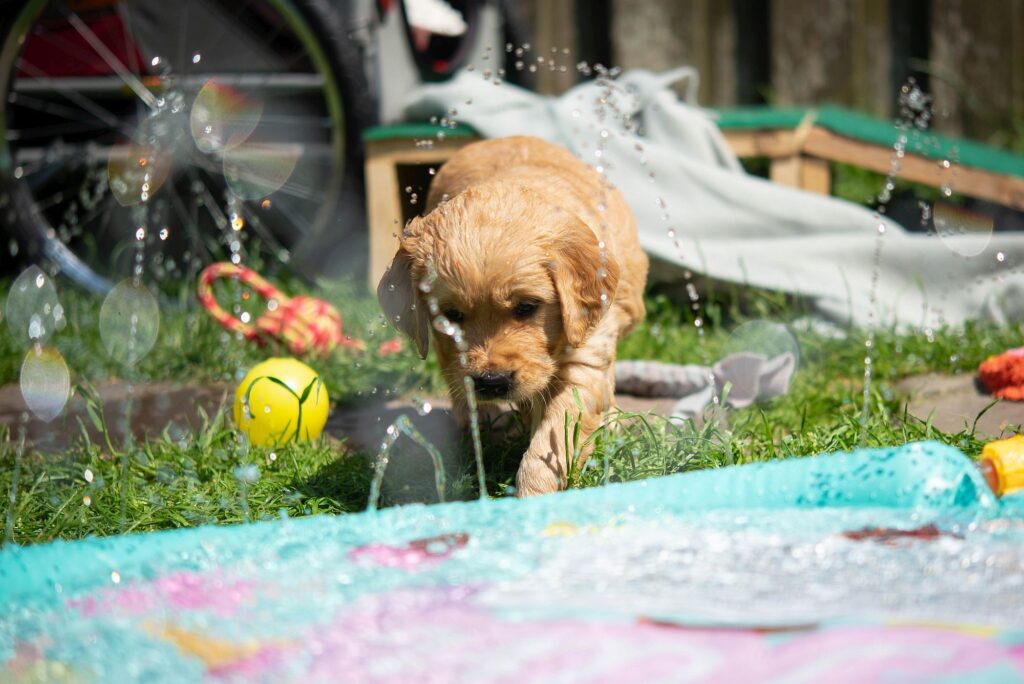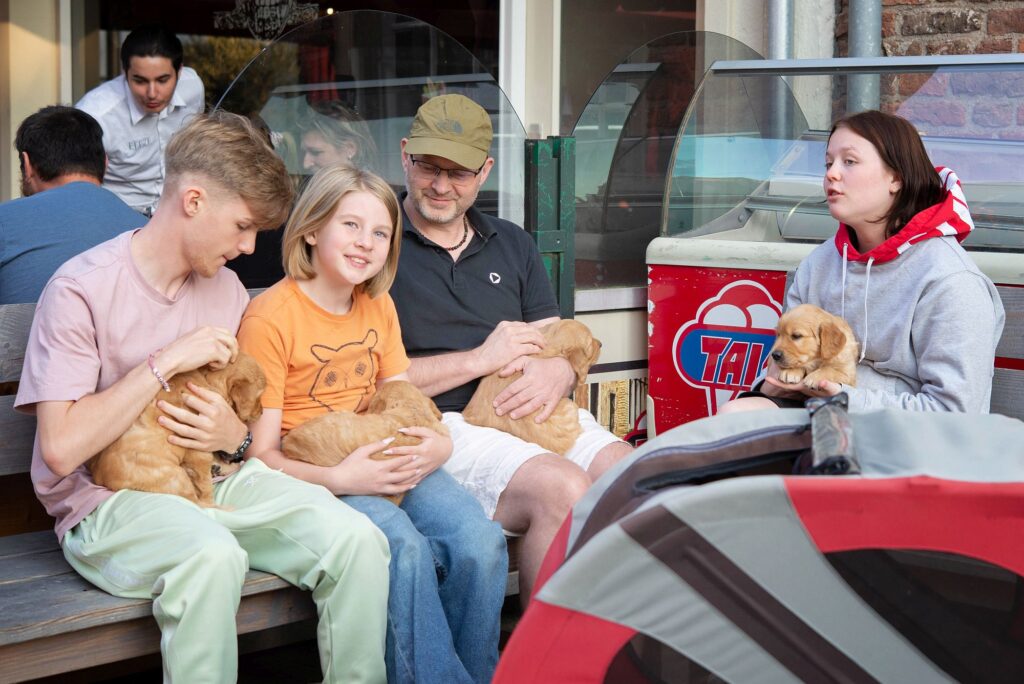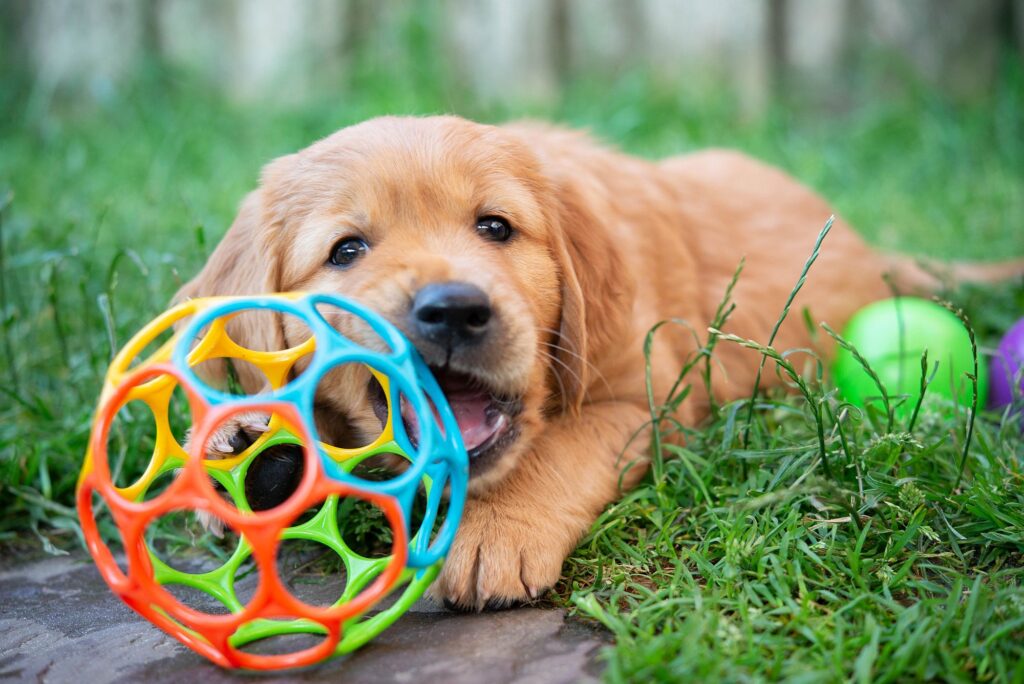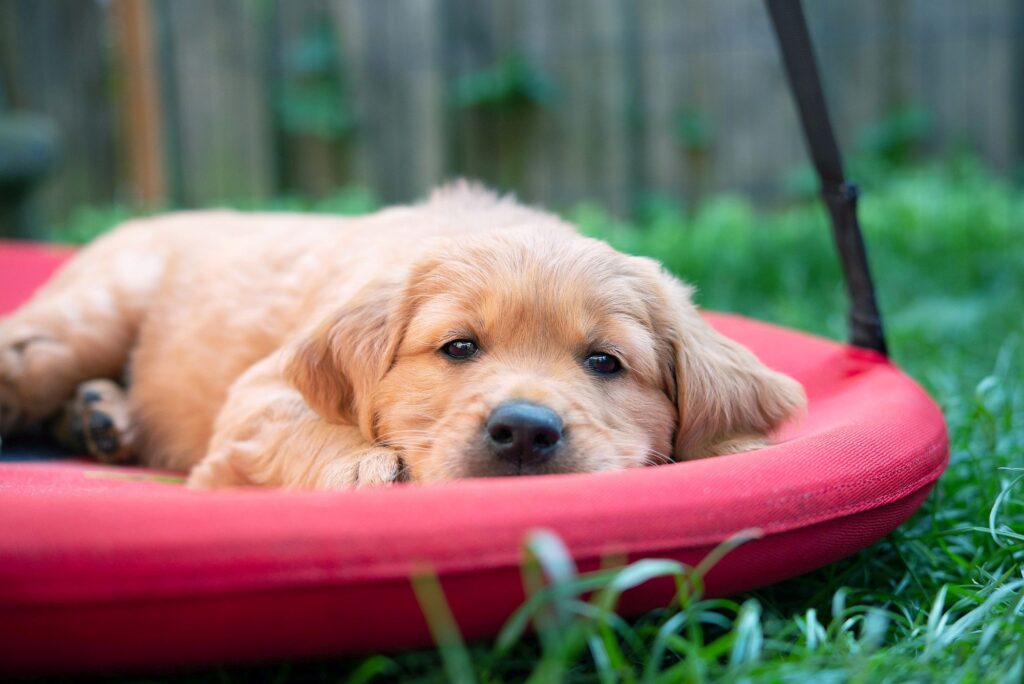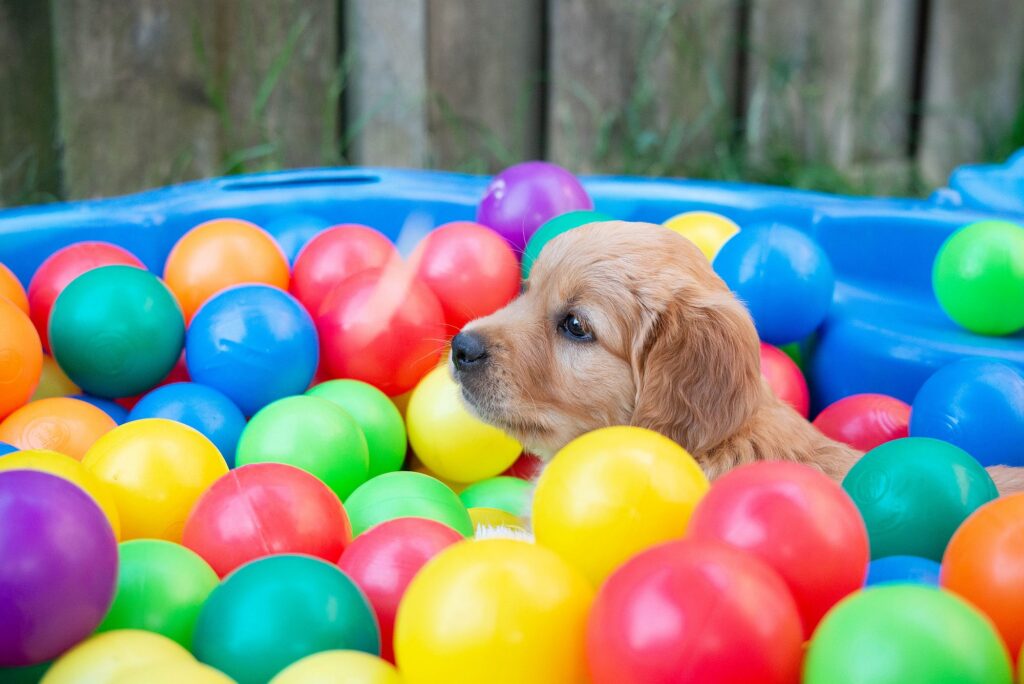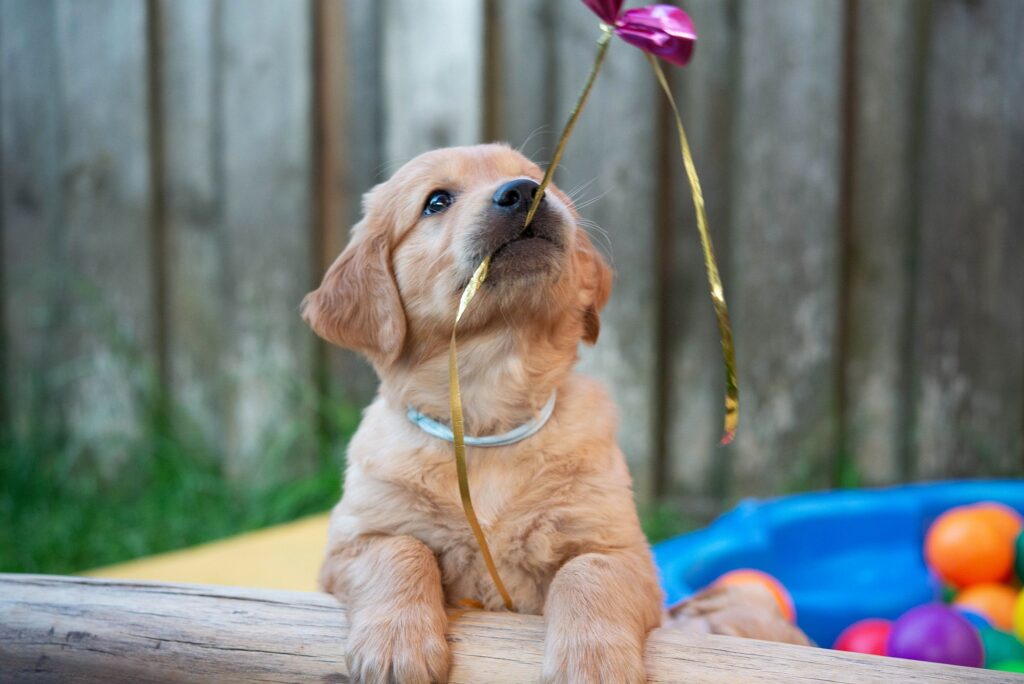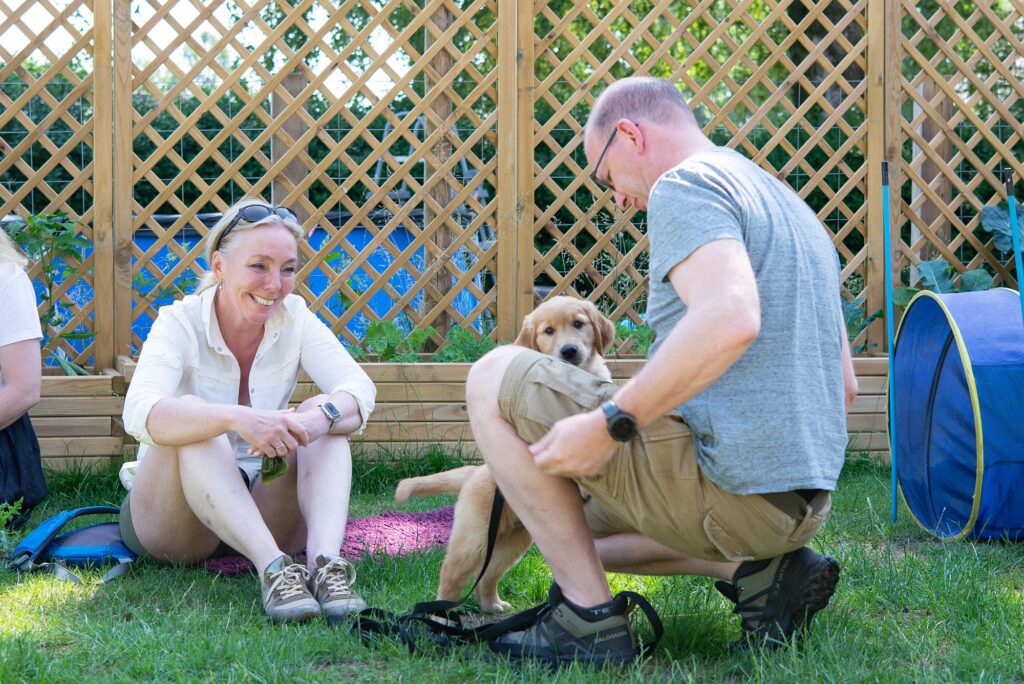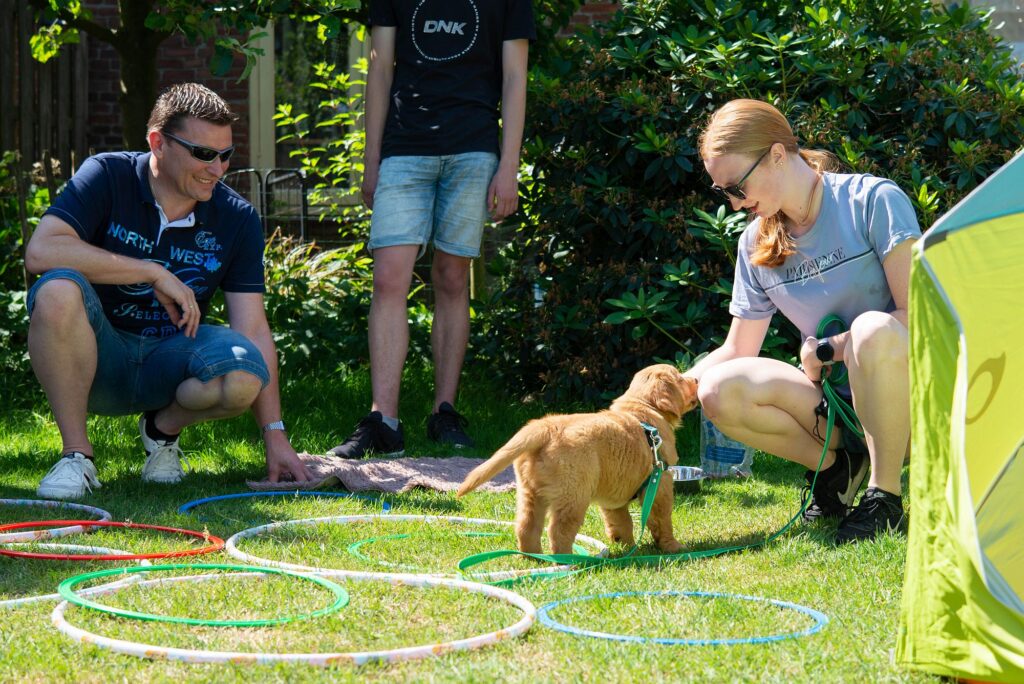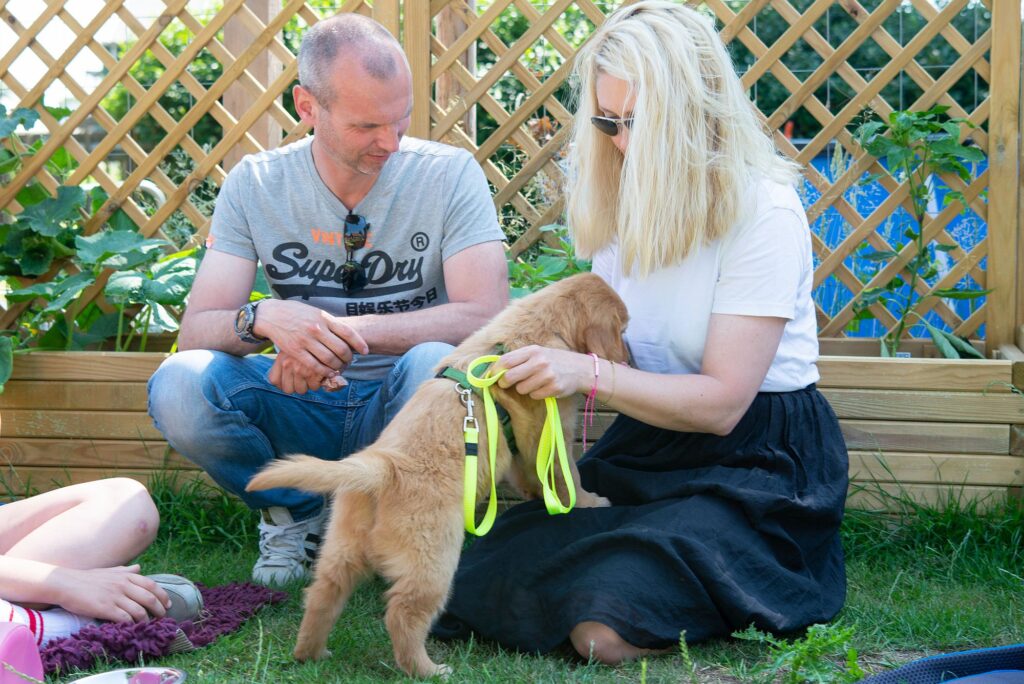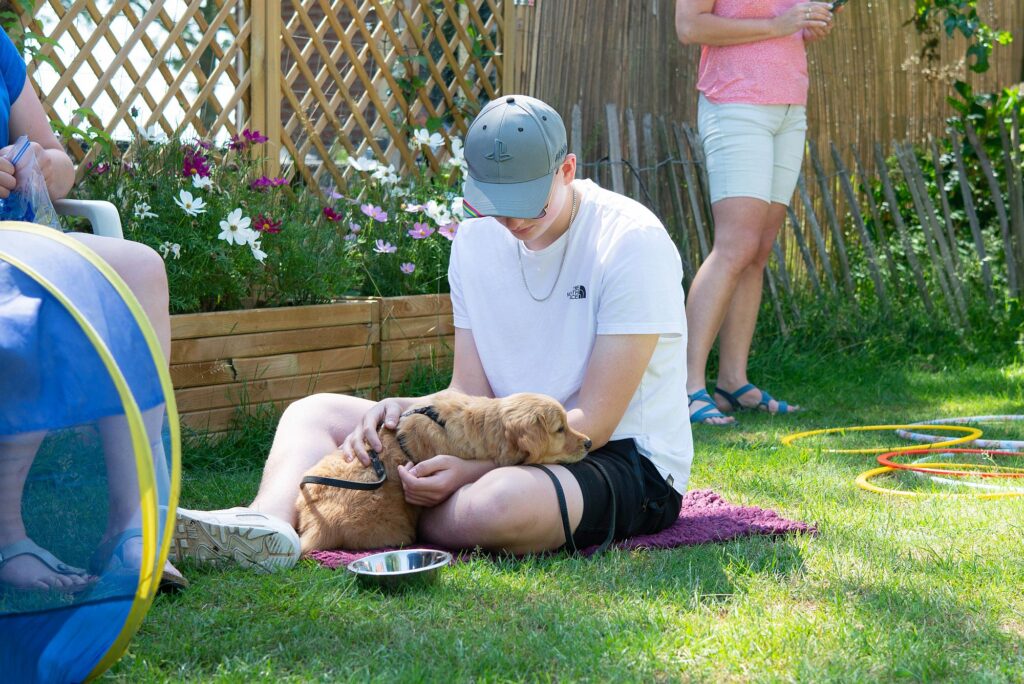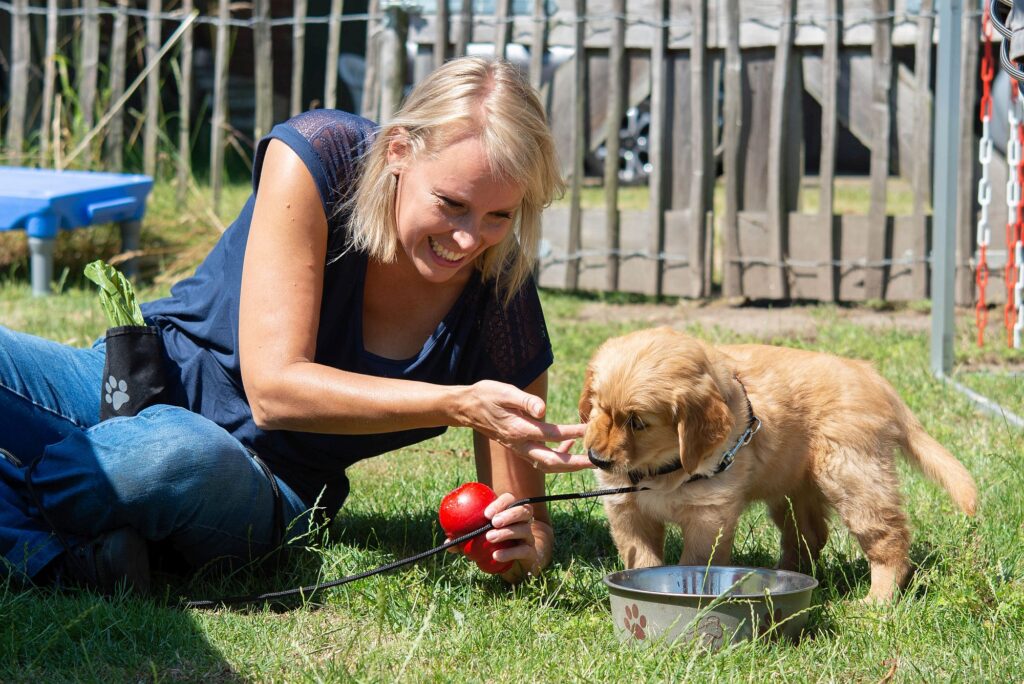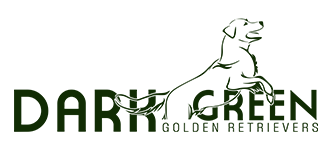
We place great importance on ensuring that our puppies have the best possible start in life, both physically and mentally. From birth until they transition to their new homes, we dedicate significant time and attention to their development. Below, you can get an impression through text and photos of how we mentally prepare our puppies for life in society.
Starting a few days before birth until the puppies are about five weeks old, someone stays with them overnight to closely monitor the mother and pups, ensuring they receive the necessary care and attention around the clock.
In the first few days after birth, the environment remains calm, with a focus on the puppies’ growth and health, as well as the physical and mental well-being of the mother. The bond between the mother and puppies is encouraged, and assistance is provided when needed to support the mother in caring for her litter.
From days 3 to 16, we introduce a different scent each day (Early Scent Introduction – ESI) without overwhelming the puppies, and we incorporate gentle activities to aid their neurological development (Early Neurological Stimulation – ENS).
During the first week, small objects are placed in the whelping box, such as different textured surfaces, various scents, soft challenges like rolled towels to climb over, plush toys, tissue boxes, soft obstacles, and blankets. The focus is on gentle touch, warmth, sensory stimulation (touch and smell), and nurturing care from the mother.
In the second week, we build on the experiences from the first. Each day, we introduce something new. As the puppies open their eyes, we add visual stimuli to the existing sensory inputs of touch and smell (near/far, color/contrast, light/dark, textures, moving away/approaching, etc.). Small items like plush toys, placemats, and bath mats are added, and the puppies are given a bit more space to explore.
Around day 21, the puppies transition from sucking to licking and begin holding objects. We offer small, portable items they can grab and carry. Sensory stimulation continues in week three, with an emphasis on touch, smell, and sight, and the puppies’ ability to hold things is further developed. Auditory stimulation also begins, with a variety of sounds introduced alongside everyday household noises, such as bells, humming, singing, and gentle sounds like blowing on their bellies or the noise of a pet dryer. Each puppy is also carried individually for short outings around the neighborhood.
From week four, socialization and habituation become key. Every day, we change and enrich their play area with items like small bottles, bowls, balls, and balancing boards. People of various ages and appearances, different types of animals, and a range of sounds, both loud and soft, are introduced. We wear wigs and hats and sometimes play music. Weather permitting, the puppies spend time in the garden, are carried around the neighborhood, and even sit by the road to experience traffic and be in the car for a moment. Every other day, we conduct activities in small groups.
By week five, the puppies are taken to different areas in and around the house to explore on their own. In the indoor and outdoor play areas, we introduce more complex challenges, such as swings, elevated platforms, and moving toys. As they begin eating solid food (fresh meat), we also introduce kibble searches. Various flavors are offered to develop their taste preferences, and we carefully begin recall training with a whistle. Daily activities include short car rides or outings in a doggy ride.
By six weeks, the puppies are capable of many new experiences. Each day they are exposed to something different, learning to spend time away from their littermates and mother, and gradually expanding their horizons. For example, each puppy is carried to a pet store, where they are allowed to walk a short distance on their own. They start getting accustomed to wearing a harness, and recall training continues. They visit the vet for titer testing and check-ups. We begin small self-regulation exercises, such as discouraging jumping or barking during feeding time. Daily activities include outings or individual play sessions with toys like a Kong or kibble searches under towels.
In week seven, we conduct the puppy test and practice walking short distances on a leash. We focus more on playing together with people, and if the weather is good, we introduce the puppies to water at a nearby lake. They are also exposed to retrieving objects, including wild game. Outings become slightly longer, but there is always ample time for rest and relaxation.
In week eight, the puppies are paired with their future owners. During this week, we organize an activity where the puppies and their new owners spend time together to bond. A photoshoot is also arranged, and every day there is an individual activity for each puppy.
In week nine, we finalize their physical and mental preparation for their transition to new homes. Over the course of their early weeks, they have been exposed to a variety of experiences that they will carry with them throughout their lives, helping them to handle a range of situations. It will be up to their new families to continue this process of habituation and socialization, ensuring that the puppies grow into well-adjusted, confident, and happy adult dogs capable of navigating the world.
